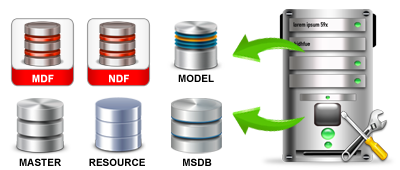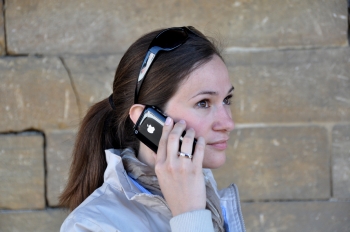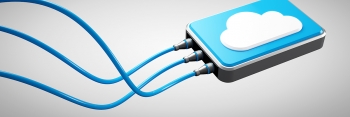- Home
- About Us
- Recovery Services Individual RecoveryEnterprise RecoveryAdditional Recovery
- Software
- Testimonials
- Locations
Data Storage On Mobile Phones & Devices
It’s a surprisingly common occurrence – just a quick installation of a new app on your smartphone or tablet and it ceases up and stops working. The mobile phone or tablet hangs during the installation process and may not even boot up if you try to restart. Nevertheless, in many cases data on the device has simply disappeared. Or perhaps the user was careless and the expensive device simply falls to the ground or even in the water. Now what? Is it possible to recover its sensitive data stored on the device yourself or should you contact a specialist? Because the mobile device, in contrast to laptops or desktops, have their own unique requirements.
Where is data usually stored on the smartphone?
In an iOS-based smartphones and tablets, all data is stored exclusively on the internal memory of the device. Depending on the model, iPhones have different sized NAND flash memory. Alternatively, data can also be stored via iTunes on the computer or stored via iCloud in the cloud.
Android-based smartphones, however, offer the possibility to use three different data storage places: In addition to the internal memory – also mostly a NAND flash – many devices have a (micro-) SD card slot on which the data can be saved. As a last resort, various data can – depending on the available amount of memory – are stored on the SIM card of the telco provider.
What types of data loss can occur on a smartphone?
Basically you have to distinguish among the possible damages between physical and logical errors. A physical error on a smartphone exists, for example, when the flash memory chip or the used controller has failed on the internal circuit board by a drop or other impact and now the device can no longer be used. Or the internal memory chips have worn out, have dropouts and no longer save correctly, or are already partially broken. Logic errors, however, are typically missing or incorrect file structures or linkages, corrupt files and file formats as well as faulty memory allocations. In short, all logical errors that cause either files will not be displayed or recorded by the system, but still exist on the memory.
In all of these cases it is best to speak with an expert. But there are also cases in which smartphone owners can save their data themselves and only if the phone or its data – whether Android or Apple iPhone.
My computer is really noisy!
It could be something very easy to fix or something much more serious requiring data recovery!
Computer making a grinding noise...
There are two possibilities that come to mind. Firstly it might be a fan issue. Many computers will run all the fans at full speed for a few seconds. They do this at start up to make sure that the fans work and to dislodge any dust or dirt that may have accumulated that a low speed wouldn’t just blow out of the way. Secondly it could be something much more serious!
If there is something partially obstructing the fan, the blades could be hitting it and that could easily sound like a grinding noise. Fans do not necessarily spin at even rates and indeed some will run the fans for only a few seconds at full speed. The reason is to dislodge any dust or particles that have collected whilst the computer is not powered. Thereafter the fans will slow to keep on top of any dust floating around. Sometimes the blades will be hitting anything that is partially obstructing the fan. This can be mistaken for a grinding noise. This is easy to spot if you open up the computer and inspect the fan blades.
Q-Cloud Protect for AWS expands Quantum's cloud services
Quantum preannounced its cloud disaster recovery and cloud backup services last year. Q-Cloud Protect is now available, along with the Q-Cloud Archive and Q-Cloud Vault.
Quantum has made its Q-Cloud backup for Amazon Web Services available, nearly a year after its official launch and more than six months behind its original schedule.
Quantum Q-Cloud Protect for AWS is one of three Q-Cloud services the vendor preannounced in January 2015. The others were Q-Cloud Archive and Q-Cloud Vault.
Protect is a companion to Quantum's DXi disk backup library family, using DXi's data deduplication and replication software. Archive and Vault are part of Quantum's StorNext file management platform. Archive, which uses Amazon Simple Storage Service to store data that needs to be accessed occasionally, became available last spring. Vault, which puts rarely accessed cold data in Amazon Glacier, followed in November 2015.
Q-Cloud Protect was originally scheduled to launch around June 2015, but tweaking the deduplication to move data off to the cloud proved trickier than expected.
5 Ways to Prevent Data Loss
While data loss affects everyone who uses a computer, it is especially problematic for those who use word processing software.
There is nothing more frustrating than losing the important documents that you've spent so much time creating -- especially if you're like most users who create documents directly on the computer and don't have the benefit of a handwritten copy.
I regularly receive questions from users who need to recover lost files, and, unfortunately, at that point it is too late to help, as the damage is already done.
The only sure-fire way to recover lost files is to restore them from a backup, and that is why it is so important to have a system to prevent data loss.
Here's what I recommend to prevent against data loss:
- Never store your documents on the same drive as your operating system
While most word processors will save your files in the My Documents folder, this is the worst place for them. Whether it is a virus or software failure, the majority of computer problems affect the operating system, and oftentimes the only solution is to reformat the drive and reinstall the operating system. In such an instance, everything on the drive will be lost.
Test-driving VMware Data Recovery
VMware Data Recovery is VMware's first foray into data recovery and backup for virtualized environments. But this relatively well-rounded product falls short in the reporting category.
Can current backup and replication technologies for virtual environments compete with old-fashioned backup solutions that are mostly file-level backups? Our contributor decided to find out. van Zanten created a test environment in which he put four virtual server backup technologies (in no particular order): Veeam Backup and Replication 3.1, Vizioncore vRanger Pro 4 Data Protection Platform, esXpress 3.6 VMware Backup, and VMware Data Recovery 1.0, to the test.
This was not performance testing, so you won't see columns and reporting on statistics, but usage testing – after all, isn't that what it's all about? If an admin has trouble using a product, he or she will probably choose a different product.
SQL Server Database Mirroring Automatic Page Repair

Problem
An issue you will face at some point in your career is SQL Server database corruption. SQL Server database corruption causes issues where data cannot be accessed correctly and often queries are aborted and do not complete correctly. A feature in SQL Server Database Mirroring is the ability to automatically fix corrupted database pages and in this tip we will look at how this is done.
Solution
Automatic Page Repair is one of the features of SQL Server Database Mirroring which helps us replace a corrupt page by getting a good copy from a partner database. This functionality works bi-directionally (i.e. if the Mirrored Database page is corrupt or a page on the Principal Database is corrupt). In this tip we will demonstrate this feature.
Let's say we have a database configured for mirroring and we want to corrupt the database so we can test out this feature.
Note - Do NOT perform this test in a PRODUCTION environment. The example is intended to demonstrate the process of recovering a page with Database Mirroring.
Copyright © 2025 DataRecoup Recovery Services. All Rights Reserved. Designed by DataRecoup Lab.





